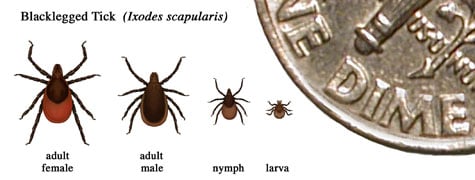Richard Winn said
Many bites are from immature ticks and these are much harder to see. I carry Tom 'O Tick removers in my rucksack just in case. They are inexpensive and designed to remove ticks safely, without leaving the head behind. Removal must be done carefully and if done correctly it can reduce the risk even if the tick is infected. Another thing to bear in mind only 90-95% of infected bites produce the classic bullseye appearance so you can't assume you haven't been infected. Also tho k about any flu-like symptoms after a bite. Also, the initial symptoms are pretty minor, but the real problems can occur years later with neurological effects.
I have been conscious of and taken avoidance measures against Lyme Disease for a long time now. As part of my research I became aware of the issues you raise about bites not being obvious.
In fact there are a number of high profile cases where individuals and families are fighting the government/NHS on the subject. They feel they are suffering the neurological deficits of advanced LD but cannot prove definitively if or when they were bitten. Instead of the NHS saying 'what the hell' and just giving them the treatment anyway they are having to go abroad for v expensive treatment elsewhere.
So I'm just underlining your points. If any model or photographer has been in grassy countryside - especially where there are deer, I understand - and come back feeling unwell after a day or so, don't pass it off as flu but check out the possibility of LD immediately. Your life as you know it could depend on it.













